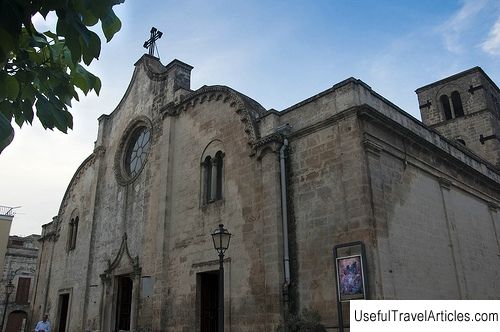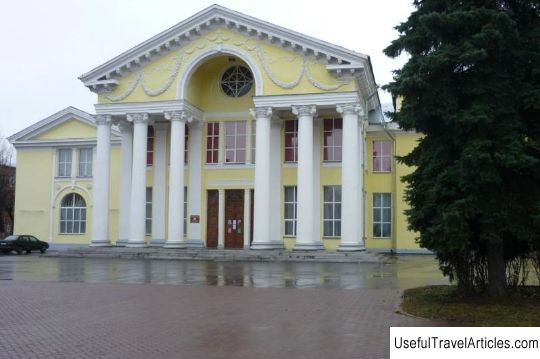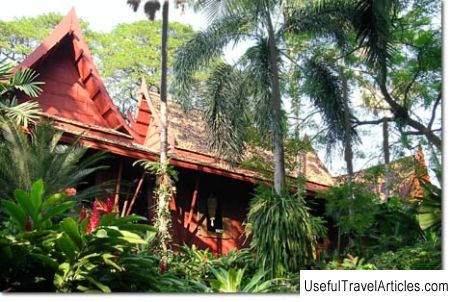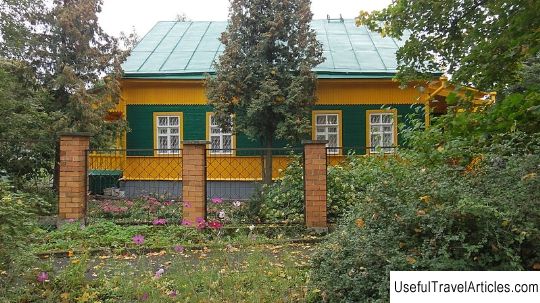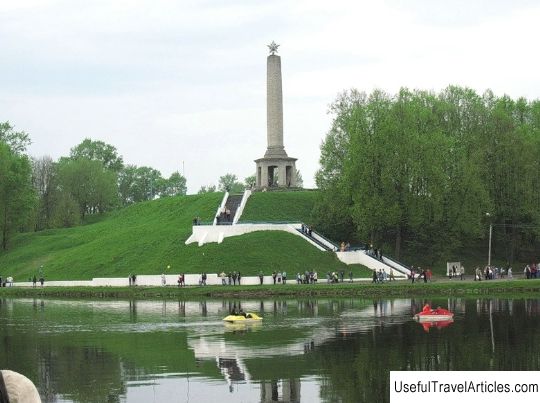Monument to K. K. Rokossovsky description and photo - Russia - North-West: Velikiye Luki
Rating: 8,9/10 (1233 votes) 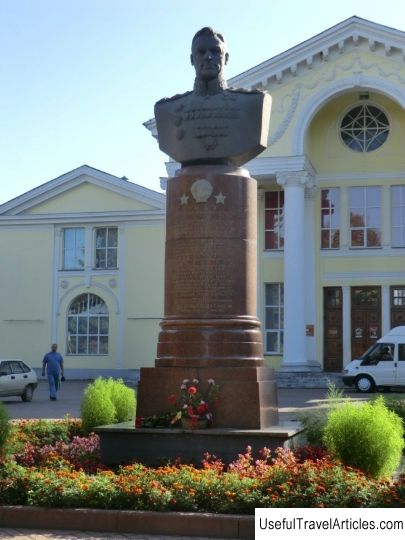
Monument to KK Rokossovsky description and photo - Russia - Northwest: Velikiye Luki. Detailed information about the attraction. Description, photos and a map showing the nearest significant objects. Photo and descriptionThe memorial bust dedicated to K.K. Rokossovsky is located in the very heart of the city of Velikiye Luki, namely on the central Teatralnaya Square, not far from the columned portico of the main facade of the theater of the drama and is facing the side of the square itself, as well as the main city street called Lenin Avenue. The author of the monument was the famous People's Artist of the BSSR, as well as the laureate of the honorary State Prize and the corresponding employee of the USSR Academy of Arts Azgur ZI .. The architect of the bust of Rokossovsky became Zakharov G.A. Rokossovsky Konstantin Konstantinovich was born in 1896 in the Pskov region in the family of a railway worker. During the first four years, Konstantin studied in Warsaw, but immediately after the death of his father, at the age of 14, he began to lead an independent life. Initially, he began to work as a handyman, after which he was hired as an apprentice stonemason. In 1912, Rokossovsky took part in a demonstration, for which reason he was arrested, but soon released due to his minority. In 1914, Konstantin was called up to the military front of the First World War, for his participation in which he received an honorary George Cross, ending the war as a junior non-commissioned officer. In the fall of 1917 he entered the ranks of the Red Guard, and in 1918 he became a member of the Red Army. For active participation in the Civil War, Rokossovsky was awarded several Orders of the Honorary Red Banner. At the end of 1925, Konstantin graduated from courses related to the improvement of the command of the cavalry. From 1926 to 1928 he worked as an instructor in the Mongolian army. Throughout 1929, Rokossovsky took courses regarding the improvement of the higher initial staff at the military academy, named after M.V. Frunze. Beginning in 1930, he commanded a brigade, regiment and division. In the city of Pskov in 1937, Konstantin Konstantinovich was the commander of the cavalry corps. In the same year, he was arrested due to his connections with the Polish and Japanese intelligence services, but despite the refusal to plead guilty, he served his sentence in the Norilsk prison. At the beginning of 1940, Rokossovsky was released and sent to the full disposal of the commander-in-chief of the military district in Kiev, Army General Zhukov G.K. On the fields of the Great Patriotic War, Rokossovsky K.K. proved himself to be a real talented commander. From August 1941 to June 1942, he was the commander-in-chief of the 16th Army, after which he took over command of the Don, Bryansk, Belorussian, Central, First Belorussian and Second Belorussian fronts, taking an active part in the Moscow, Smolensk, Stalingrad and Kursk battles. Throughout the conduct of the East Prussian, Belarusian and East Pomeranian operations, the war in Berlin was completed with his participation. For his heroic and outstanding services in the course of the offensive Belarusian operation, Rokossovsky K.K. was awarded the honorary title of Marshal of the Soviet Union. In 1944 and 1945, Konstantin Konstantinovich twice became a Hero of the Soviet Union, which is why he was awarded the title of the highest military order in the USSR - "Victory". During the June 24, 1945 parade, Rokossovsky took command of the parade. After the Great Patriotic War was over, he became the head of the Northern Group of Forces. At the end of 1949, Stalin gave the order to send Rokossovsky to the command of the Polish armed forces, making him deputy chairman of the Polish People's Republic Council of Ministers. Soon after, Konstantin Konstantinovich was awarded the title of Marshal of Poland. He returned to the USSR in 1956, taking the honorary position of Deputy Minister of Defense of the Soviet Union. In 1962, Rokossovsky K.K. became one of the General Inspectors of Defense of the USSR. After his death, he was buried at the Kremlin wall on Red Square. A memorial bust of the twice Hero of the Soviet Union, as well as the Marshal of the USSR, was installed in the city in which most of his life passed - Velikiye Luki, according to the decree of the Presidium of the Supreme Soviet of the USSR established on July 1, 1945.     We also recommend reading House of the Quran (Beit Al Quran) description and photos - Bahrain: Manama Topic: Monument to K. K. Rokossovsky description and photo - Russia - North-West: Velikiye Luki. |
